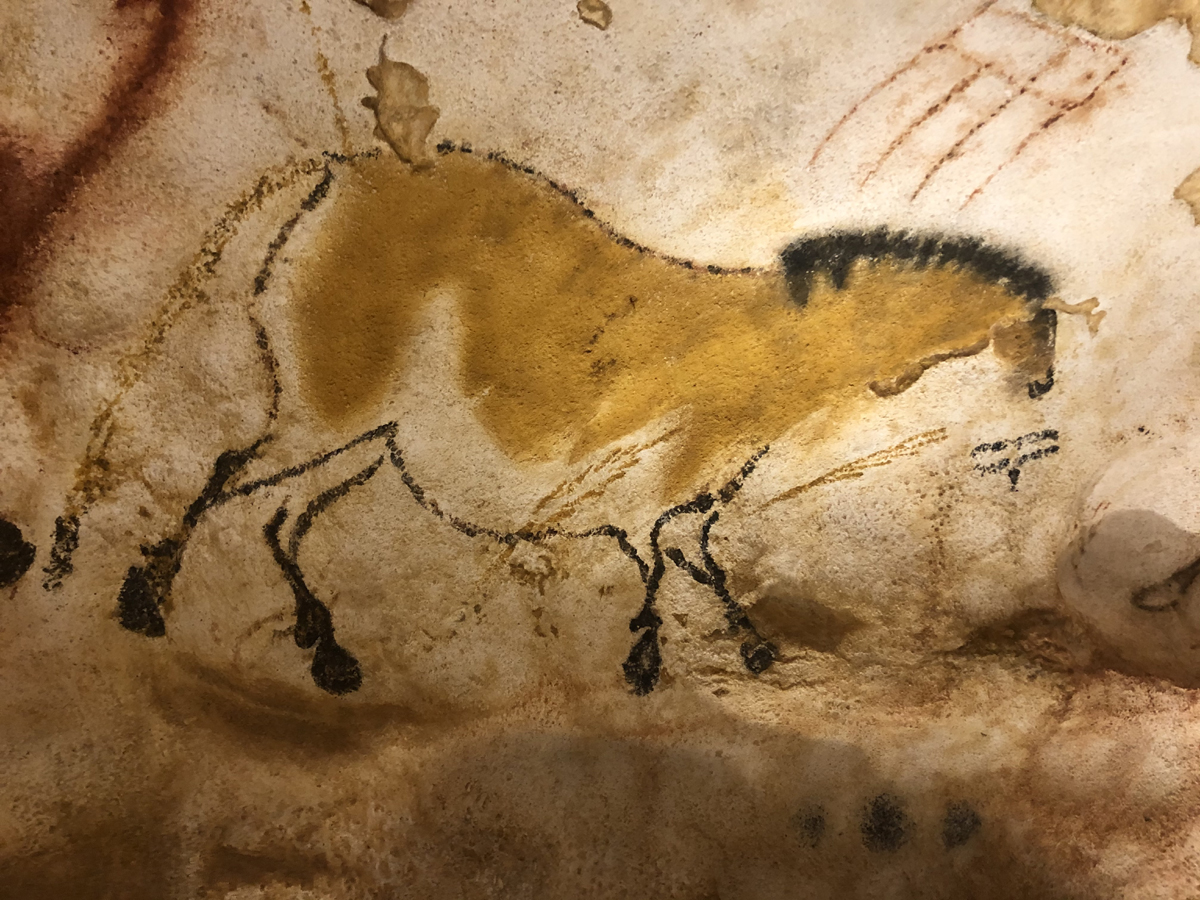


An article by Science Editor Sarah Knapton on telegraph.co.uk - How prehistoric cave paintings are helping scientists discover secrets of space - reports that the crushed burnt bone of the same kind used by Stone Age artists has been blasted on to the titanium heatshield of the Solar Orbiter.

A technique of prehistoric cave paint is being used to shield a British-built probe from the intense heat of the sun, allowing it to send back crucial information about why dangerous space weather occurs. Crushed burnt bone of the same kind used by Stone Age artists at sites like Lascaux in France, has been blasted on to the titanium heatshield of Solar Orbiter, a joint European Space Agency (ESA) Nasa craft, which launched on the 10th of February.

The blackened bone - which has been turned into a sturdy coating of calcium phosphate called ‘Solar Black’ - is extremely durable, which is why the 20,000-year-old cave paintings still survive.
“It’s funny that something as technologically advanced as this is actually very old,” said Anne Pacros, the payload manager at the ESA’s, European Space Research and Technology Centre in the Netherlands. “Although Solar Orbiter goes quite close to the Sun, it also goes quite far away. We have to survive both high heat and extreme cold.”
The shield is 15 inches thick and has several peepholes for five of the spacecraft’s remote sensing instruments to peer through. The black titanium layer is about the width of a human hair.
Specialists designing the probe were originally stumped about how to protect the scientific instruments on-board from the searing heat of the Sun, which will reach nearly 1,000F at the closest approach distance of 26 million miles. Existing paints and coatings could not withstand the solar heat and radiation, nor survive across the wide temperature range.
Irish bio-engineer John O’Donoghue had no thoughts of outer space when he came up with a method for bonding crushed bone to metal. An expert in medical implants he was looking for a material to coat artificial joints so they would bond to the human skeleton. When flicking through the Enclyopedia Britannica he came across the Lascaux cave paintings and realised that crushed bone would be perfect. Titanium, used in joints and pacemakers, while strong and durable, is incredibly slippery, because it reacts almost immediately with air, becoming inert, which stops anything from sticking to it.
O’ Donoghue developed a technique which strips the oxidised surface layer of titanium away and before it can react with the air, quickly blasts another layer to the surface. It can never come off, because it effectively becomes part of the metal and the European Space Agency realised it would be perfect for their needs.
Solar Orbiter will spend nearly two years travelling towards the Sun, stopping when it is roughly the distance of the planet Mercury, and falling into orbit around the star. There, the craft will try to answer basic questions about the Sun, such as what drives the huge solar flares which can bring mass disruption to Earth.
by Bradshaw Foundation
Monday 30 May 2022
by Bradshaw Foundation
Wednesday 19 January 2022
by Bradshaw Foundation
Thursday 06 January 2022
by Bradshaw Foundation
Monday 06 December 2021
by Bradshaw Foundation
Monday 29 November 2021
by Bradshaw Foundation
Monday 25 October 2021
by Bradshaw Foundation
Monday 12 July 2021
by Bradshaw Foundation
Monday 24 May 2021
by Bradshaw Foundation
Tuesday 20 April 2021
by Bradshaw Foundation
Thursday 01 April 2021
by Bradshaw Foundation
Tuesday 23 February 2021
by Bradshaw Foundation
Thursday 14 January 2021
by Bradshaw Foundation
Friday 18 December 2020
by Bradshaw Foundation
Sunday 06 December 2020
by Bradshaw Foundation
Thursday 26 November 2020
by Bradshaw Foundation
Wednesday 07 October 2020
by Bradshaw Foundation
Monday 30 May 2022
by Bradshaw Foundation
Wednesday 19 January 2022
by Bradshaw Foundation
Thursday 06 January 2022
by Bradshaw Foundation
Monday 06 December 2021
by Bradshaw Foundation
Monday 29 November 2021
by Bradshaw Foundation
Monday 25 October 2021
by Bradshaw Foundation
Monday 12 July 2021
by Bradshaw Foundation
Monday 24 May 2021
by Bradshaw Foundation
Tuesday 20 April 2021
by Bradshaw Foundation
Thursday 01 April 2021
by Bradshaw Foundation
Tuesday 23 February 2021
by Bradshaw Foundation
Thursday 14 January 2021
by Bradshaw Foundation
Friday 18 December 2020
by Bradshaw Foundation
Sunday 06 December 2020
by Bradshaw Foundation
Thursday 26 November 2020
by Bradshaw Foundation
Wednesday 07 October 2020
Friend of the Foundation











